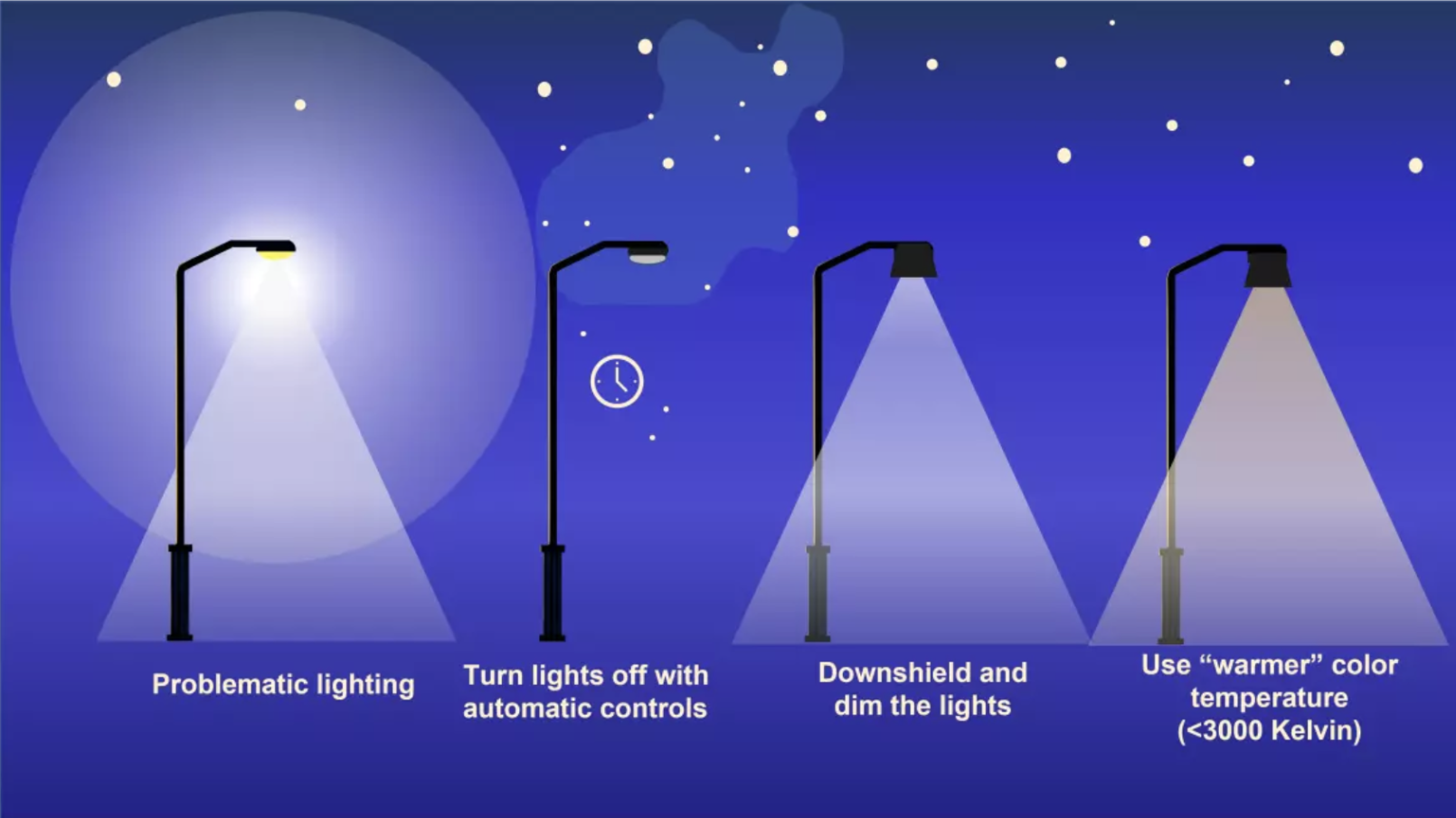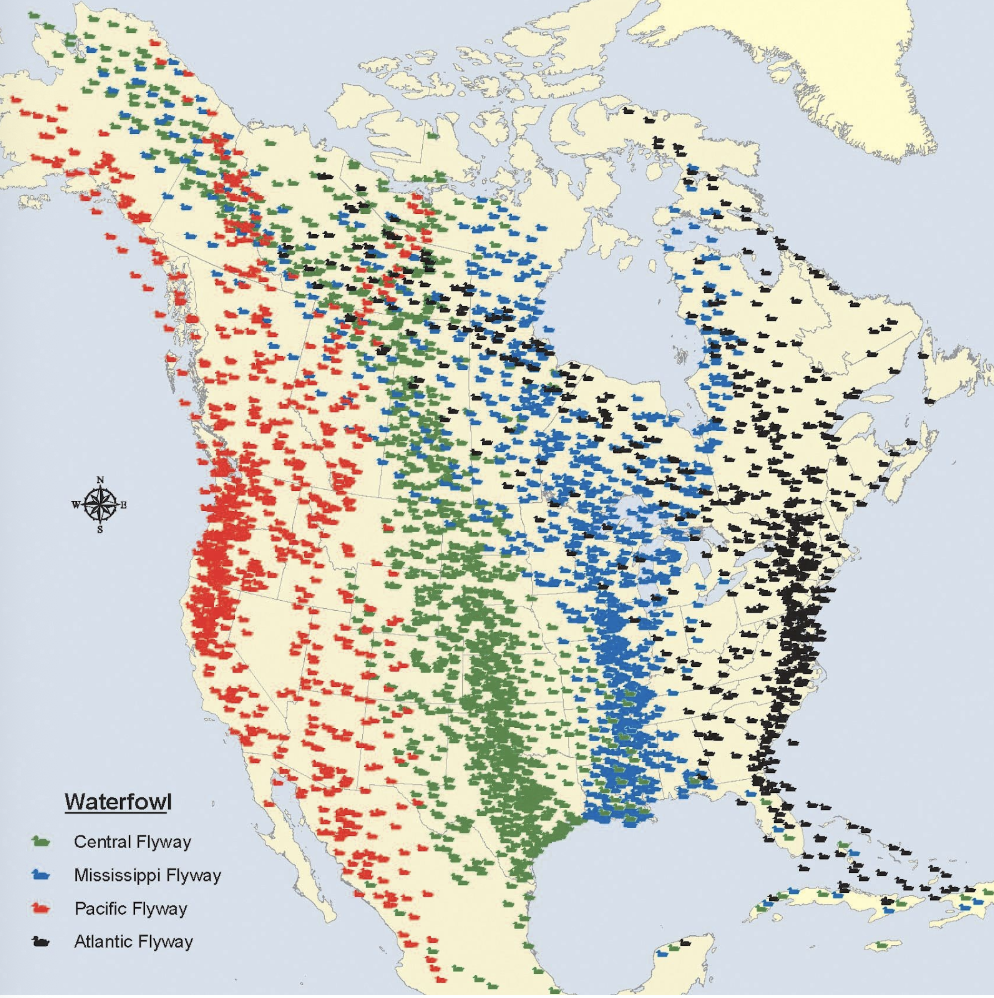Lights Out, Community In
Taking Action for Migratory Birds in Redmond
Written by Sayna Parsi
When I was younger, I used to think the night sky was eternal—that the stars above us would always be there, unchanged, guiding both people and animals alike. It wasn’t until I began learning about migratory birds that I realized how fragile that assumption was. Starry night skies that once guided birds now dazzle and confuse them, pulling them into city centers where glass and artificial lights become a deadly duo.
“Protecting migratory birds doesn’t require a biology degree or a government title. It requires curiosity, care, and a willingness to act. ”
Lighting can attract large numbers of night-migrating birds. Birds drawn into lights often become entrapped and circle the lit area, which can deplete their energy stores needed for migration and put them more at risk of colliding with buildings and infrastructure. Every year in the U.S., nearly 1 billion birds die from building collisions, most of them migratory species traveling at night. But here’s the hopeful part: when communities step in with science-based solutions, the results are dramatic.
And here in Redmond, as a new member of the Parks, Trails, and Recreation Commission, I would like us to join that momentum.
If you’d like to be part of this movement in Redmond, sign up for the interest group to receive email updates about our progress and learn about opportunities to take action.
Image credit: USFWS
What Science Tells Us About Birds and Light
Birds rely on a complex set of cues to migrate:
Celestial Navigation: Many species use the stars as a compass. Indigo Buntings for example, orient themselves by the stars (reference). When artificial light masks the stars, they can no longer calibrate their star-based compass.
Magnetic Compass: Many bird species sense Earth’s magnetic field, but strong city light can overpower that sense, pulling them into hazardous flight paths.
Circadian Rhythms: Light pollution interferes with circadian rhythms, causing birds to leave too early or too late, often missing food and safe resting sites.
The result? Every year in the U.S., up to 1 billion birds die from building collisions, often drawn off course by city lights. That number is almost unthinkable—yet it’s preventable.
Success Stories That Inspire
McCormick Place Glass Collision Reductions
One standout case is the McCormick Place Lakeside Center in Chicago. After a collision event in October 2023 killed nearly 1,000 migratory birds in a single night, conservation partners and the U.S. Fish & Wildlife Service offered guidance. The center responded by installing treatments to make glass visible to birds and reduced collisions by 94% (reference).
Policy Shifts Across the Country
Arizona: Several municipalities, including Tucson, have adopted ordinances to reduce unnecessary outdoor lighting. Originally aimed at preserving the desert night sky for astronomy, these laws have had the added benefit of reducing risks for migratory birds and other nocturnal wildlife.
Michigan: In 2021, Ann Arbor became one of the first cities in the Midwest to adopt a bird-friendly building ordinance led by Astronomy professor Sally Oey. It requires large new buildings and significant renovations to incorporate bird-safe glass. The city also embraced “Lights Out Ann Arbor,” encouraging residents and businesses to turn off unnecessary lighting during migration. Together, these measures are already credited with reducing bird mortality in the city.
Each of these examples shows us that when data, community action, and policy intersect, results follow.
Where Redmond Comes In
Bird Migrating Routes
Credit: North Dakota Game and Fish Department
Redmond, lies along the Pacific Flyway, one of North America’s four major bird migration routes. This pathway stretches from Alaska through Washington and down to Central and South America. Each spring and fall, millions of birds use it as a critical corridor, stopping in wetlands, forests, and lakes around Redmond to rest and refuel.
🎥 Sharing Knowledge Through Film
Science doesn’t live in journals alone—it lives in conversations. We’re planning a community screening in November 2026 of the documentary Lights Out Texas, with a license generously offered to us through the Cornell Lab of Ornithology, that explores how light pollution reshapes ecosystems. We will follow the screening with a panel conversation about actionable steps that we can take on.
🏛️ Collision Monitoring
We look forward to putting together a collision monitoring program to understand the problem areas in Redmond and where to focus our efforts, and we could use your help!
If you’re interested in helping join our efforts and becoming more involved, express your interest to the sign up form. No experience is needed, just a dedication to keeping birds safe.
🏛️ Toward a Bird-Safe Ordinance
Many cities across the country have already adopted bird-friendly lighting ordinances. While Redmond was among the early cities to put a lighting ordinance in place, there’s still significant room for improvement. We’re now exploring ways to strengthen our approach—reducing unnecessary nighttime lighting while keeping community safety front and center. For example, updated zoning standards could help ensure that sensitive habitats such as wetlands remain dark during critical hours. Likewise, wider use of motion-sensor lighting would allow residents and businesses to maintain safety and security, while also conserving energy and cutting down on light pollution that disrupts both birds and people.
Be Part of the Change
Protecting migratory birds doesn’t require a biology degree or a government title. It requires curiosity, care, and a willingness to act. If you’d like to be part of this movement in Redmond, sign up for the interest group to receive email updates about our progress and learn about opportunities to take action. Whether it’s volunteering for monitoring walks, joining us at the Lights Out Texas screening, or supporting policy change, your role matters.



